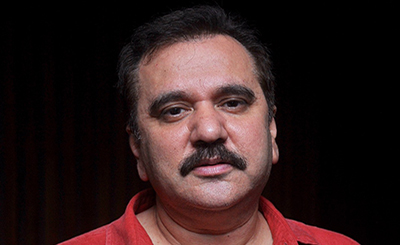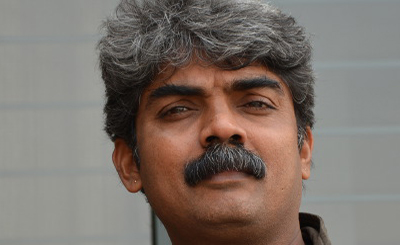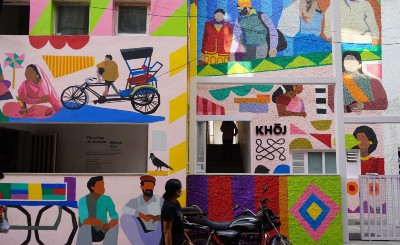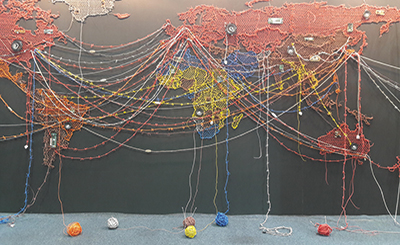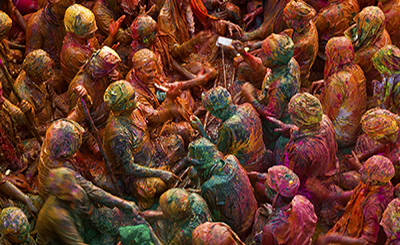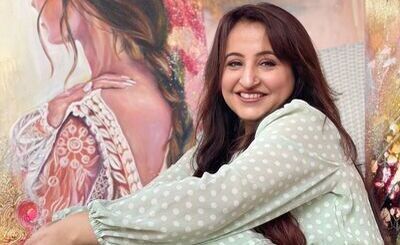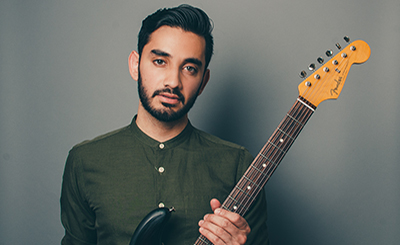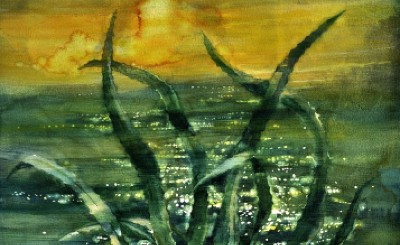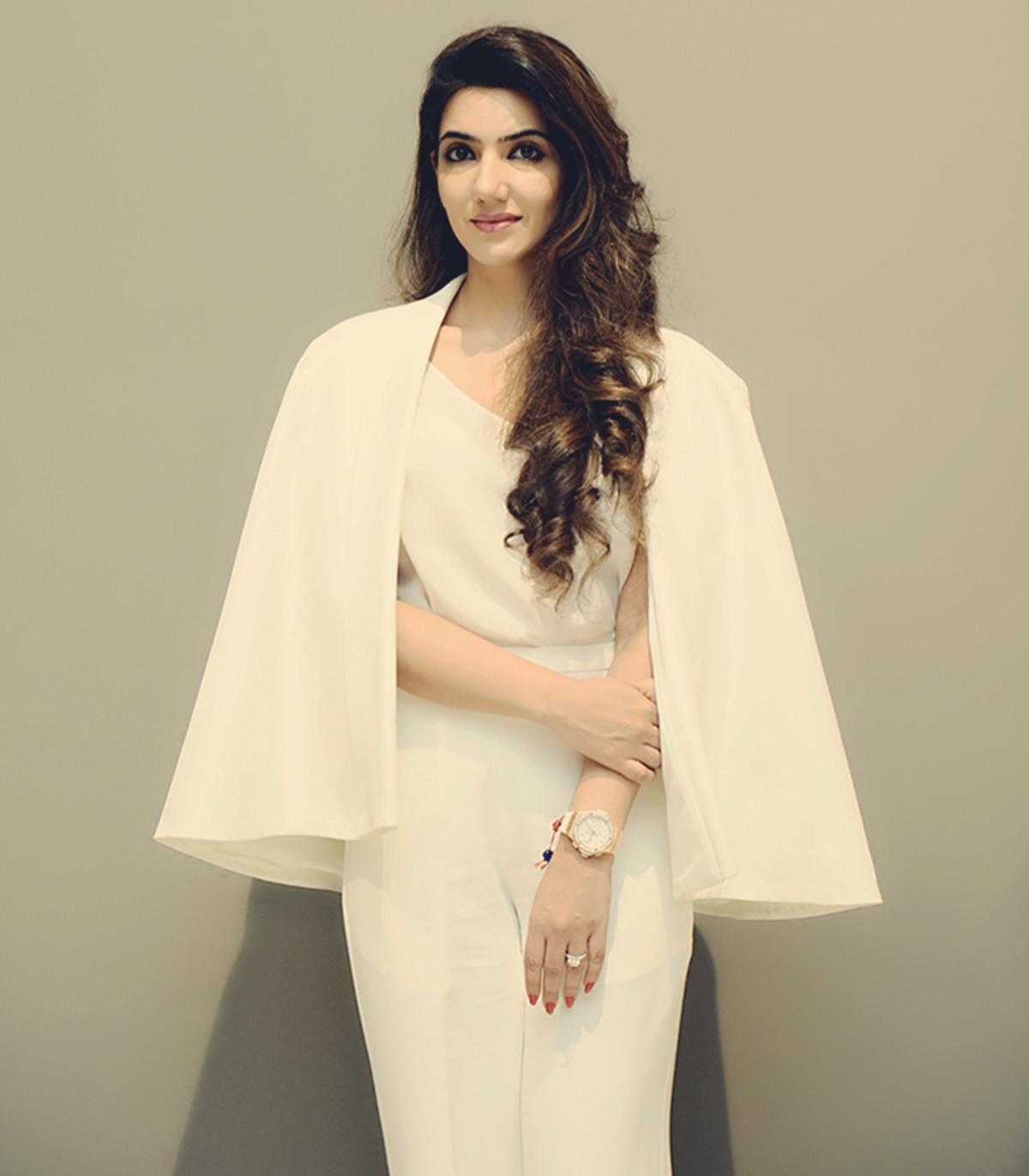
Mandira Lamba. Photos courtesy of Blueprint12/Tribal Art Forms
Mandira Lamba was the chairperson of YFLO Delhi (Young FICCI Ladies Organization) during 2019-20. She is the founder and director of two art ventures — Blueprint12 and Tribal Art Forms (TAF). The two ventures while being completely different in the art they represent are homogeneous in their attempt to nurture and promote art.
Blueprint 12 is dedicated to experimental forms of art from South Asia and to providing a platform for cultural exchange in the region. Apart from showcasing such unique collections, Blueprint 12 runs a prestigious residency programme in Vadodara where it houses its own studio. Each year, Mandira carefully selects seven promising artists to join her residency programme where the artists work in an enriching and stimulating environment.
TAF was formed with the intent to promote and showcase art of the tribal communities. It is an attempt to prevent extinction of tribal art and to keep its lineage intact. Through TAF, Mandira provides not only international exposure to tribal artists, but also assists in conferring a distinct value to both the artists and the collectors. Mandira, with her co-founders Ridhi Bhalla and Rasika Kajaria, has launched TAF to revive the dying patronage of the living traditions of the Indian tribal art.
A graduate of Fashion Institute of Technology, New York, Mandira is interested in the evolution of fashion and the ever-growing fashion industry. Her love affair with sports started at the age of 8 when she travelled to Korea to participate in an international Karate competition. She went on to become a Black Belt at the age of 13. A keen golfer, she has played competitively on the Indian amateur circuit and still manages to find time for a weekly round. She has played competitive hockey and, with her cricket-crazy son, keenly follows cricket. Mandira loves travelling and feels fortunate that her interest in sports, art, fashion enriches her understanding of the people she meets and enhances her experience of the places she visits whether it is a small village in the interiors of India or a metropolitan city abroad.
Excerpts from an interview:
You come from a fashion background. How come you decided to set up a gallery?
During my growing-up years, I was exposed to art through my Dad who was an avid collector: going to artists’ studios and exhibitions. As I grew up, I started to work with my parents, who had been running their gallery for many years. It was a great platform to learn and understand the art market in general. But, as time passed, I realised that we (I and my partner) needed to follow our own vision. We developed our own eye. So, the idea came to set up a separate entity wherein we would be absolutely free to experiment with art forms and artists.
Could you elaborate why you named one of your galleries as Blueprint12? Is the idea to chalk out the ‘blueprint’ of the Indian art scene?
For us, Blueprint means ‘our story, our DNA and our plan for the South Asian Art.’ As for chalking out the Indian art scene, we certainly hope to!
You have a very interesting roster of artists; you practically cover the entire South Asian region. What made you look at the territory beyond India? Was the region’s art more exciting for you? How do you choose your artists?
May I start to say, it was thanks to you Amit; the show, ‘Reading Room’ that you curated for us in 2014. This show’s format and its five editions from Delhi, Mumbai, Kochi, Winchester and New York truly opened our eyes to the amazing talent that lies in the South Asian region.
Somehow, text in art and art in text has always engaged us, and we would end up engaging mostly with genre. As time passed, we realised that unintentionally we had ended up with a roster of artists who mostly work with text.
For the last five years, you have been a ‘nomadic’ gallery; the only regular visibility you got was India Art Fair each year. You have also collaborated with a couple of galleries in Delhi and in Mumbai. How does collaboration become one of your strongest ideologies?
Yes, in fact, everyone was very eager to know our plans for a physical space. Of course, now we have launched one; it was our agenda for 2020.
But all these years, we chose to grow organically with a small roster of artists that we represent. Our agenda was to showcase their works though travelling shows, gallery collaborations and, of course, the Art Fair. If we may say, it worked! We took small but steady steps.
Additionally, the beauty of the contemporary galleries today is that each of us represents our own set of artists and there is no overlap. So collaborations work brilliantly. We have had the opportunity to show with TARQ, Vadehra Art Gallery and Gallery Espace and I must say each collaboration was fantastic!
In general, the best example of collaboration should be Delhi Contemporary Art Week (DCAW), which started three years ago with seven galleries showcasing together. In fact, it’s a platform we really look forward to each year.
An interesting trajectory you have taken is collaborating with Rasika Kajaria, owner/COO of Exhibit 320, to open TAF to pursue your life-long passion for folk and tribal art forms. Could you talk about that?
In the year 2019, we got into a conversation with Exhibit 320 for collaborating on an exhibition that focused on Indian folk and tribal art. Of course, there was a lot of research required to bring it together and during this journey of six months we both realised that this genre needed a whole dedicated space! Hence, we both decided to take the plunge and create a new entity, TAF.
I see that you are very hands-on. You still don’t have a gallery assistant. How do you manage both work and personal lives?
We have an infrastructure in place with all the help, but yes without a galley assistant.
Very honestly, between my partner and me, we have managed to take personal interest in the whole gallery management. Luckily, with our varied backgrounds, our roles are most appropriately defined. While she looks into admin and back-end, I’m handling marketing and artist relationships.
Of course, with the increased work load, a permanent programmed space and hopefully more and more show, we will have an assistant soon.
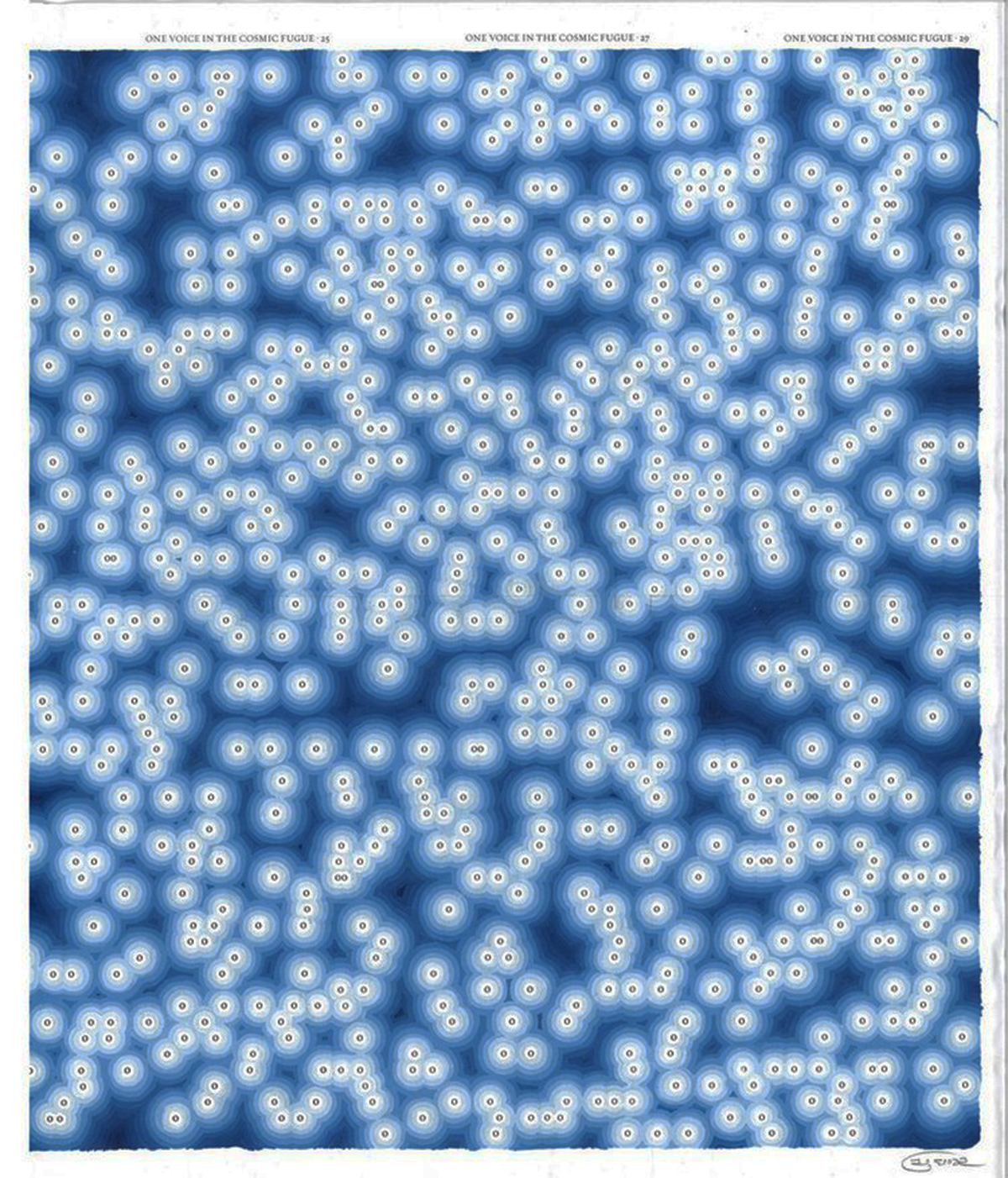
One voice in the cosmic fugue | Acrylic on deacidified book pages | 14.35” x 12.75” | 2019, Vadhera Art Gallery
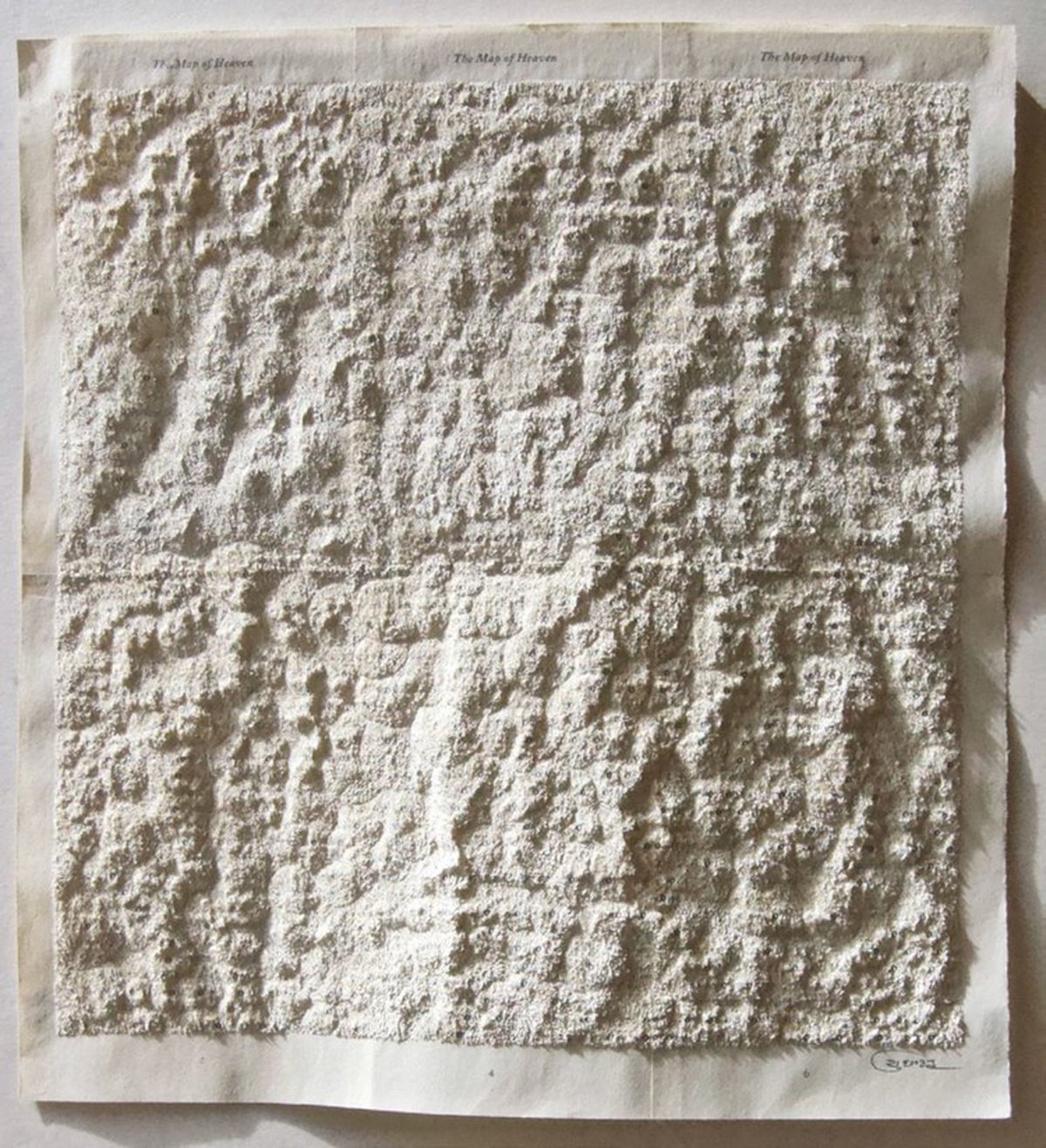
A map of heaven | Needle pricks on deacidified book pages | 14.8” x 13.6” | 2019, Vadhera Art Gallery
I think you are now doing your first International Art Fair in Dubai. Please walk us through what you are showing.
Yes, it was for 2020, but as we know everything shifted to 2021.
Last year, we received an email from Art Dubai to participate in the Bawabba section, curated by Nancy Adajania, showcasing a solo booth by Youdhisthir Maharjan. It was indeed the most exciting invitation and we were honoured to have that privilege.
So that is what we will be showcasing, a solo representation of works by Maharjan, who works with reclaimed text book pages and treats them differently, sometime cuts of the letters, crocheting the paper or erases the text.
What tips would you give on collecting art, considering most of your collectors are young? How do you nurture them?
Yes, that’s true, most of our collectors are young people, with discerning eye for experimental art forms. The few tips that we have always given them is a) read and research before you purchase any work of art, and b) only buy if you truly love the work, do not fall for any ‘in-artist’, follow your own eye.
More from Arts
Comments
*Comments will be moderated




